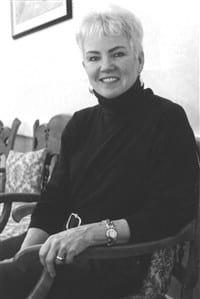Healing Globetrotter Dr. Simone Topal Changes Lives in Her Hometown and Worldwide
During a trip to Cusco, Peru in 2005, Dr. Simone Topal blogged about meeting a 9-year-old girl named Ocdulia, who had a severely cleft lip.
“It took her 10 hours to get here — five hours walking and another five by truck,” wrote Topal, a plastic surgeon who was in Peru with Interplast, a humanitarian organization that provides free reconstructive surgery worldwide, mostly to children in developing countries.
“She and her mother only speak Quechua, so one of the relatives of another patient, who was in the operating room for a burn procedure, helped us translate from Spanish. I explained the operation to her and obtained her mother’s consent to operate. Ocdulia has two brothers and two sisters, and attends school in her village. She had never left her village or met a doctor before, so she told the translator to tell me that she was very scared.”
But Ocdulia’s mother, who had never set foot in a hospital before, entrusted her daughter to the team. “Normally we aren’t able to take last-minute patients like this,” Topal wrote, “but since I had set a rather light schedule for our first day of surgery, it was possible to add Ocdulia on. We felt like it was important, especially because she and her family had come such a long way, and it would be difficult for them to return next week, or even next year.”
This scenario is, quite literally, a world apart from Massachusetts, with its riches of health care options in every county — yet, it’s a world to which Topal, who heads Northampton Plastic Surgery in Florence, keeps returning.
“Some of these people can’t get this treatment, and some can’t afford it,” Topal told The Healthcare News, noting that she has done plenty of cleft lip and palate work overseas, in addition to burn reconstruction, ear reconstruction, and hand surgery. “A lot of these kids work in factories and get injured, and we see some adults, too.”
Coming Home
Working with Interplast can be intense; one year’s commitment to the organization took Topal to Honduras, Nicaragua, Ecuador, Peru, Bangladesh, Zambia, and Vietnam. More recently, she spent the last two weeks of March in India.
But this Northampton native made another key travel decision when she returned home after earning her medical degree at the St. Louis School of Medicine and completing an internship and residency at Dartmouth-Hitchcock Medical Center in New Hampshire.
“I always wanted to be a doctor,” said Topal, whose father, Sam, was a prominent ob/gyn in the region. “Initially I thought I’d be a country, family doctor, but I realized my strengths were more with surgery.
“What I like about plastic surgery is that it’s a very creative field,” she continued, “and there’s a wide range of procedures, from head to toe, for all ages, babies to elderly people. You have to work with what you’ve got.”
About 25{06cf2b9696b159f874511d23dbc893eb1ac83014175ed30550cfff22781411e5} of her work is cosmetic, from face and neck lifts, nose reshaping, and eyelid work to breast lifts, arm lifts, breast augmentation, tummy tucks, and liposuction. The majority, however, is reconstructive surgery, which includes repairing defects from skin cancer, breast reconstruction after mastectomy, burn reconstruction, hand surgeries, and cleft and palate surgery, such as the work she performed on young Ocdulia in Peru.
“Some of these procedures have changed from open to endoscopic,” she said. “We can use the scope now for carpal tunnel surgery, and it’s less invasive. You can also use the scope for some kinds of browlifts.”
She also touted the emerging field of microsurgery, in which a piece of tissue can be relocated on the body and the disconnected blood vessels hooked up using a microscope. “Say a guy has injured his leg in a motorcycle accident, and the nerves and blood vessels are still there, but he’s missing a huge chunk of skin and muscle,” she said. “Sometimes you can transplant a piece of skin or muscle from another part of the body and reconstruct that.”
Other, non-surgical advances have helped popularize cosmetic surgery because of their low impact on the body, Topal said, including botox and injectable wrinkle fillers.
“That’s really changed the way we do a lot of cosmetic surgery,” she noted. “There’s less down time and more immediate results. The downside, of course, is that most of those things are temporary.”
Valley Girl
Also temporary was Topal’s time away from her hometown. She now practices in the restored former Florence Sewing Machine building on Main Street, consulting with patients and doing non-surgical procedures there; she performs surgery at nearby Cooley Dickinson Hospital.
“I’ve enjoyed coming back home,” she said. “This is a great area. The social life is good. It’s a cosmopolitan place, but it’s accessible, and it’s beautiful; there’s a lot to do outdoors.”
And she’s learned much about enjoying life through her work in plastic surgery — specifically, that positive body image is a critical facet in people’s happiness, whether they knock on her door for elective cosmetic surgery or to repair the damage caused by disease or injury.
“The thing about plastic surgery is you’re working on the outside of the body, where you can see it,” Topal said. “This work gives the patient a lot of satisfaction — and me, too, knowing that I can fix this huge facet of their life that they see on a daily basis.”




Comments are closed.